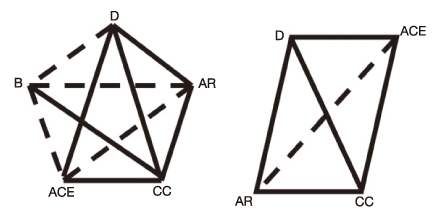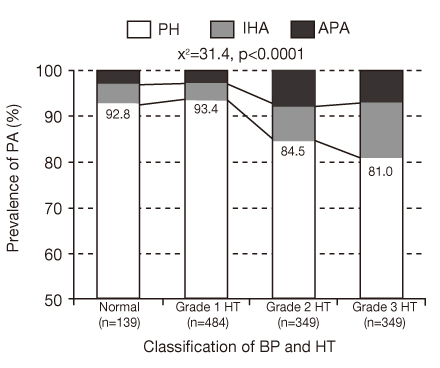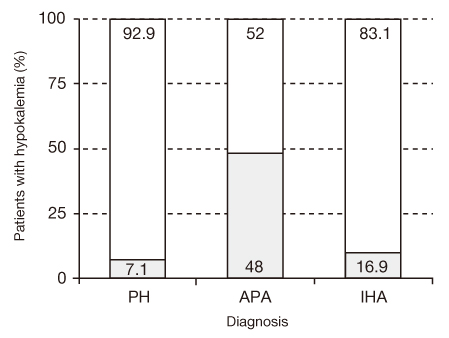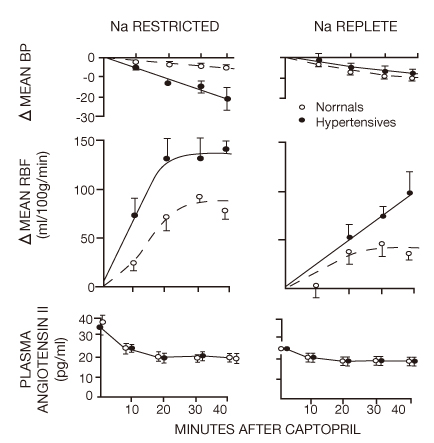J Korean Med Assoc.
2010 Mar;53(3):208-213. 10.5124/jkma.2010.53.3.208.
Recent Advance in the Treatment of Hypertension
- Affiliations
-
- 1Department of Internal Medicine, Seoul National University College of Medicine, Korea. cheolkim@snu.ac.kr
- KMID: 1775332
- DOI: http://doi.org/10.5124/jkma.2010.53.3.208
Abstract
- Hypertension is one of the most significant but modifiable risk factors for cardiovascular disease. Previous clinical trial clearly showed that blood pressure reduction effectively decreased the incidence of cardiovascular and cerebrovascular events. Despite the improvement of hypertension treatment, the overall control rate of hypertension has not yet been clearly improved. The proportion of hypertensive patients who have their blood pressure controlled has increased dramatically during the past several decades; however, a lot of patients still did not reach the optima goal. In addition, other cardiovascular risk factors such as dyslipidemia, diabetes, and chronic kidney disease rapidly increased recently. As such, the proper control of the risk factors is much more important in high risk hypertensive patients. The control of hypertension continues to be inadequate despite the effective, well-tolerated medications. The control rates are even worse among the high risk patients, to whom target blood-pressure levels of 130/80 mm Hg or lower are recommended. In order to improve the level of blood pressure control in the population, we should enhance the awareness and treatment of hypertension through public health education. In addition, aggressive combination therapy including diuretics, overcoming therapeutic inertia, and screening for primary aldosteronism is warranted in all the hypertensive patients. Novel therapeutic approach for hypertension such as immunization against angiotensin II or renal denervation has gained much attention. In condusion, despite recent advance in pharmacological therapeutics, the rate of hypertension control is still far from satisfactory. Lower treatment thresholds and more intensive treatment contribute to better hypertension control. In particular, much more efforts are needed to encourage the use of low-cost thiazide diuretics as antihypertensive agents in patients taking more than three anti-hypertensive medications.
Keyword
MeSH Terms
-
Angiotensin II
Antihypertensive Agents
Blood Pressure
Cardiovascular Diseases
Denervation
Diuretics
Dyslipidemias
Humans
Hyperaldosteronism
Hypertension
Immunization
Incidence
Mass Screening
Public Health
Renal Insufficiency, Chronic
Risk Factors
Sodium Chloride Symporter Inhibitors
Angiotensin II
Antihypertensive Agents
Diuretics
Sodium Chloride Symporter Inhibitors
Figure
Reference
-
1. Chobanian AV. Shattuck Lecture. The hypertension paradox-more uncontrolled disease despite improved therapy. N Engl J Med. 2009. 361:878–887.
Article2. Okonofua EC, Simpson KN, Jesri A, Rehman SU, Durkalski VL, Egan BM. Therapeutic inertia is an impediment to achieving the Healthy People 2010 blood pressure control goals. Hypertension. 2006. 47:345–351.
Article3. Elliott WJ. Management of hypertension in the very elderly patient. Hypertension. 2004. 44:800–804.
Article4. Beckett NS, Peters R, Fletcher AE, Staessen JA, Liu L, Dumitrascu D, Stoyanovsky V, Antikainen RL, Nikitin Y, Anderson C, Belhani A, Forette F, Rajkumar C, Thijs L, Banya W, Bulpitt CJ. HYVET Study Group. Treatment of hypertension in patients 80 years of age or older. N Engl J Med. 2008. 358:1887–1898.
Article5. Japanese Society of Hypertension guidelines for the management of hypertension (JSH 2004). Hypertens Res. 2006. 29S:S1–S105.6. Mancia G, De Backer G, Dominiczak A, Cifkova R, Fagard R, Germano G, Grassi G, Heagerty AM, Kjeldsen SE, Laurent S, Narkiewicz K, Ruilope L, Rynkiewicz A, Schmieder RE, Boudier HA, Zanchetti A, Vahanian A, Camm J, De Caterina R, Dean V, Dickstein K, Filippatos G, Funck-Brentano C, Hellemans I, Kristensen SD, McGregor K, Sechtem U, Silber S, Tendera M, Widimsky P, Zamorano JL, Erdine S, Kiowski W, Agabiti-Rosei E, Ambrosioni E, Lindholm LH, Viigimaa M, Adamopoulos S, Agabiti-Rosei E, Ambrosioni E, Bertomeu V, Clement D, Erdine S, Farsang C, Gaita D, Lip G, Mallion JM, Manolis AJ, Nilsson PM, O'Brien E, Ponikowski P, Redon J, Ruschitzka F, Tamargo J, van Zwieten P, Waeber B, Williams B. Management of Arterial Hypertension of the European Society of Hypertension. European Society of Cardiology. 2007 Guidelines for the Management of Arterial Hypertension: The Task Force for the Management of Arterial Hypertension of the European Society of Hypertension (ESH) and of the European Society of Cardiology (ESC). J Hypertens. 2007. 25:1105–1187.7. Julius S, Kjeldsen SE, Weber M, Brunner HR, Ekman S, Hansson L, Hua T, Laragh J, McInnes GT, Mitchell L, Plat F, Schork A, Smith B, Zanchetti A. VALUE trial group. Outcomes in hypertensive patients at high cardiovascular risk treated with regimens based on valsartan or amlodipine: the VALUE randomised trial. Lancet. 2004. 363:2022–2031.
Article8. Staessen JA, Den Hond E, Celis H, Fagard R, Keary L, Vandenhoven G, O'Brien ET. Treatment of Hypertension Based on Home or Office Blood Pressure (THOP) Trial Investigators. Antihypertensive treatment based on blood pressure measurement at home or in the physician's office: a randomized controlled trial. Jama. 2004. 291:955–964.9. Parati G, Stergiou GS, Asmar R, Bilo G, de Leeuw P, Imai Y, Kario K, Lurbe E, Manolis A, Mengden T, O'Brien E, Ohkubo T, Padfield P, Palatini P, Pickering T, Redon J, Revera M, Ruilope LM, Shennan A, Staessen JA, Tisler A, Waeber B, Zanchetti A, Mancia G. ESH Working Group on Blood Pressure Monitoring. European Society of Hypertension guidelines for blood pressure monitoring at home: a summary report of the Second International Consensus Conference on Home Blood Pressure Monitoring. J Hypertens. 2008. 26:1505–1526.
Article10. Rossi GP, Bernini G, Caliumi C, Desideri G, Fabris B, Ferri C, Ganzaroli C, Giacchetti G, Letizia C, Maccario M, Mallamaci F, Mannelli M, Mattarello MJ, Moretti A, Palumbo G, Parenti G, Porteri E, Semplicini A, Rizzoni D, Rossi E, Boscaro M, Pessina AC, Mantero F. PAPY Study Investigators. A prospective study of the prevalence of primary aldosteronism in 1,125 hypertensive patients. J Am Coll Cardiol. 2006. 48:2293–2300.
Article11. Jamerson K, Weber MA, Bakris GL, Dahlöf B, Pitt B, Shi V, Hester A, Gupte J, Gatlin M, Velazquez EJ. ACCOMPLISH Trial Investigators. Benazepril plus amlodipine or hydrochlorothiazide for hypertension in high-risk patients. N Engl J Med. 2008. 359:2417–2428.
Article
- Full Text Links
- Actions
-
Cited
- CITED
-
- Close
- Share
- Similar articles
-
- Erratum
- Introduction of Recent Hypertension Guidelines
- Relationships among Perceptions of Dying Well, Attitudes toward Advance Directives, and Preferences for Advance Directives among Elderly Living Alone
- Influence of Advance Directives' Self-efficacy of Community-dwelling Older Adults on the Completion of Advance Directives: Mediating the Effect of Intention for Advance Directives: A Cross-Sectional Study
- Pulmonary Arterial Hypertension





